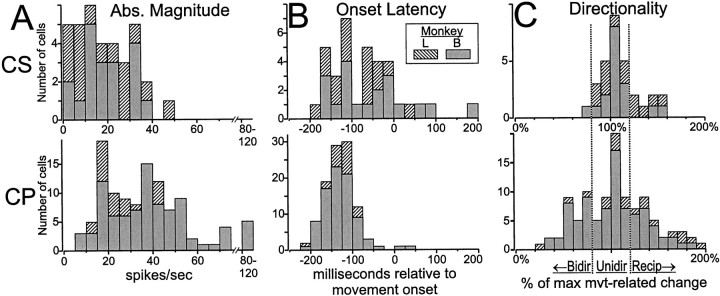Fig. 10.
Contrasting properties of perimovement activity in CSNs and CPNs. Compared with CPNs, the perimovement activity of CSNs was as follows: A, smaller in magnitude, andB, later in onset relative to the start of movement.C, For CSNs, perimovement activity was most commonly present for only one direction of movement (Unidir, reflected by an IDM ∼100%), whereas substantial numbers of CPNs had movement-related activity that was either of the same sign for both directions (Bidir, IDM < 80%) or of opposite signs for the two directions (Recip, IDM > 120%). IDM distributions are shown in histogram form for all neurons that had significant perimovement activity. Similar differences were observed for cells sampled from monkeys L and B (denoted byhatching and gray shading, respectively).

